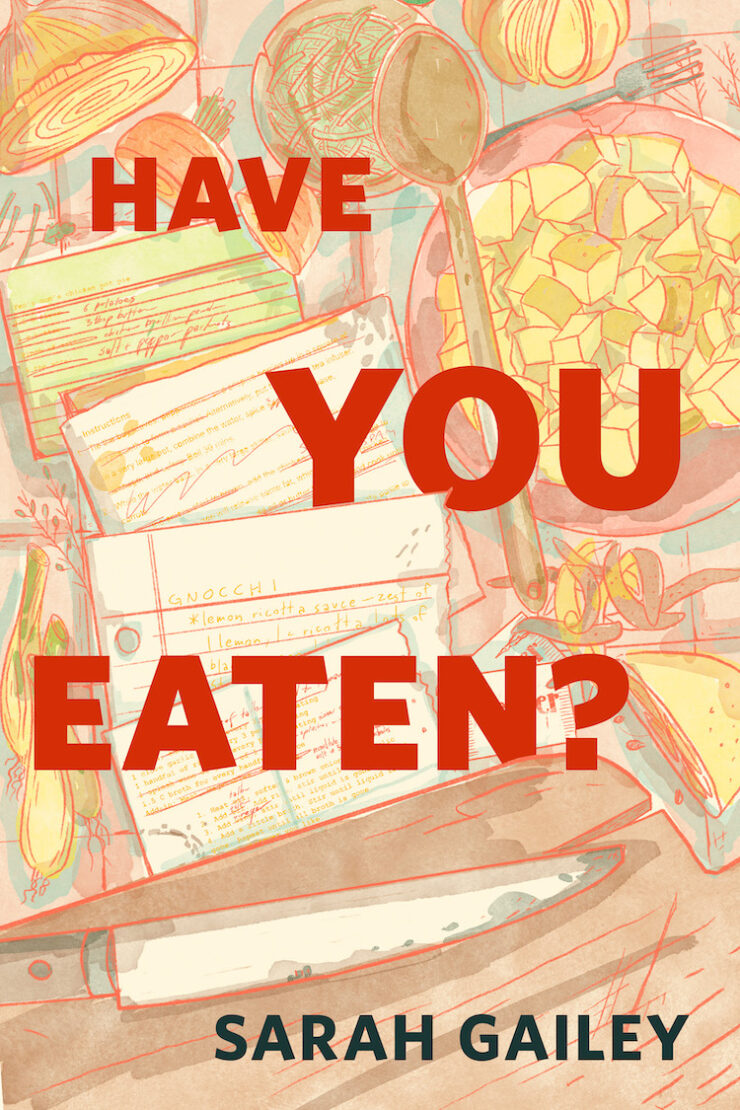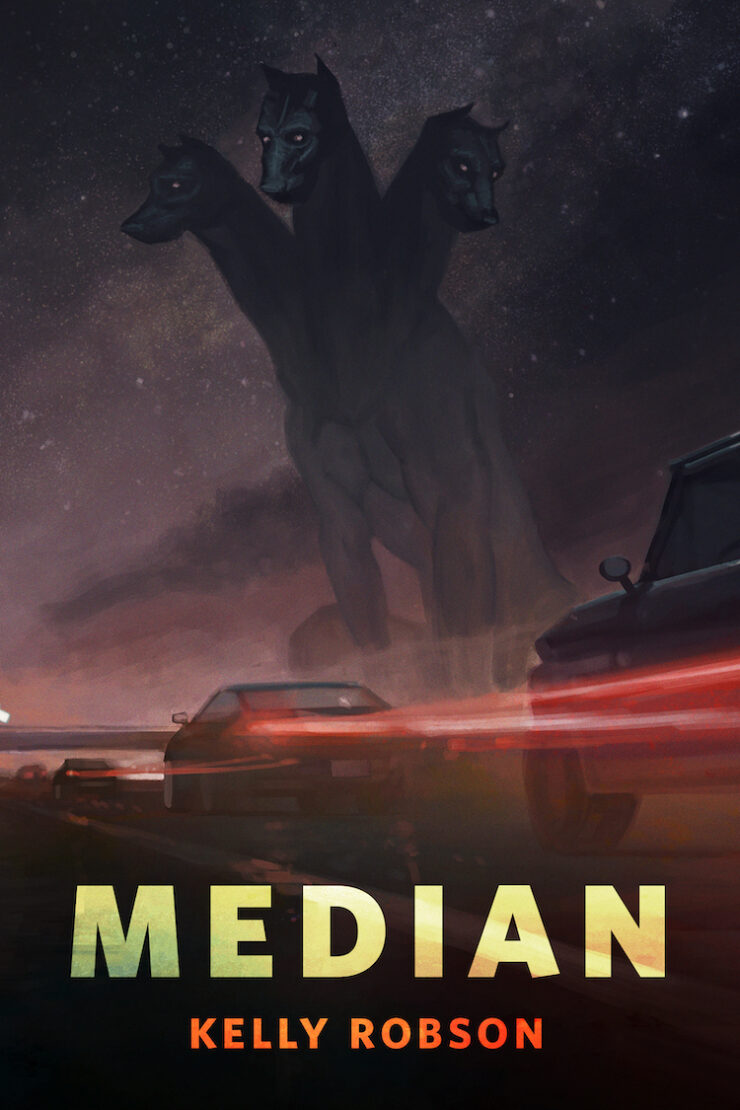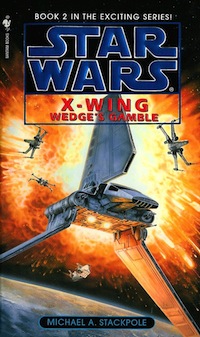I really like the contemporary remake of Ocean’s 11 and its various sequels because I like complicated schemes with lots of moving parts which only make sense in a certain fictional context.
The second Michael A. Stackpole book in the X-Wing series is very much like one of those movies, and if you picture George Clooney as Wedge Antilles, Brad Pitt and Tycho Celchu and Matt Damon as Corran Horn, it really, really works. The Rogues are up for covert action and this time, they’re letting some scum and villainy run amok!
With orders directly from Leia Organa Solo herself, the Rebel Alliance decides it’s high time to actually take back Coruscant from Imperial forces. As it turns out (and as correctly parodied by Robot Chicken) winning one major battle at Endor does not a galaxy-spanning event make. If freedom and galaxy are really going to get restored, the actual capital of the galaxy needs to be in the hands of the good-guys. Notably, this Coruscant-central way of thinking about the politics of the Star Wars galaxy was firmly established by Timothy Zahn in the Thrawn Books and effectively created a more realistic or at least explicable governing system which is somewhat absent from the films themselves. To put it another way: a belief in an all-powerful Force controlling everything doesn’t actually put roofs over people’s heads or keep citizens safe.
In order to get the capital of the galaxy back, Rogue Squadron embarks on a covert mission to bring a bunch of prisoners from the spice mines of Kessell and set them loose on the streets of Coruscant with the intention of sowing chaos to be timed with the Rebel invasion. Through various point-of-view switches, it gradually becomes apparent that Imperial badass Ysanne Isard (nicknamed “the Ice Queen”) is hip to these machinations, and instead has other plans up her recently-dry-cleaned uniform sleeve. So, while the Rogues are infiltrating criminal organization Black Sun doing their Ocean’s Antilles thing, the reader gets the general sense that everyone is walking into massive trap.
For even a casual Star Wars fan, once you’re really into novel, you might actually forget you’re reading a Star Wars book. So much of the plot starts to rely on your knowledge of what you’ve learned in the first X–Wing book, and other than the taking back of the galaxy, nearly none of what is happening is connected to a larger Star Wars story. Reader surrogate Corran Horn is engaging in possibly two potential romances: one with fellow pilot Esri Dlarit and another with smuggler and uneasy ally of Rogue Squadron, Mirax Terrik. (Mirax initially hated Corran because he used to be space-cop and got her father arrested way back in the day, but at this point, they are doing a sort of Scarlett and Rhett thing.) When I first read this book as teenager, the push-and-pull of the two love interests seemed correct to me: Corran Horn was cool. But, upon new read, I find it rather formulaic. Just like in a James Bond movie, The Dark Knight Rises, or any episode of Knight Rider, the “good guy” can’t have two “girlfriends,” meaning something is going to happen to one of them, or one of them will turn out evil. (For other examples of this cliché playing out in science fiction see nearly every single romance on both versions of Battlestar Galactica, as well as its spin-off, Austenland.)
The weird thing with all of this is like Zahn before him, Stackpole is doing a solid job of populating the Star Wars fictional landscape with people who are women and not named Princess Leia. It’s all fairly positive, but certainly doesn’t tend to pass a Bechdel test all the time, nor is a more experienced reader truly fooled by this idea that two people like Corran. DUH, could one of them be the traitor? (Seriously, the more I think about this, Mirax Terrik = Catwoman and Erisi Dlarit = Miranda Tate/Talia al Ghul.) Am I telling you who the traitor is in Rogue Squadron in this installment of the series? Do you really need me to?
As a kind of space-heist-style plot-heavy book, Wedge’s Gamble is in many ways more enjoyable than the first in the series, and if you’re okay with jettisoning some plot-distracting clichés, there’s plenty of intrigue here to keep the pages turning. Plus, Stackpole manages to make the Rebel Alliance more liberal and humanitarian than ever before. The evil plan being cooked up by Isard the Ice Queen involves a disease which kills only “aliens.” Now, while technically everyone in Star Wars is an alien, this specifically refers to “humans” versus everybody else. This nicely expands on the themes of diversity glimpsed in Return of the Jedi but expanded on greatly in the novels and comic books. The reason to not only dislike the Empire, but hate it, is because they are oppressive to fish-people, squid faces, Ewoks, and mumblers galore! Here, Isard’s plan to perpetrate a holocaust of sorts is rivaling the genocide dreamt up by Palpatine himself. Most telling though, Isard is even scarier because she views this as a simple tactic, rather than Palpatine, who (I guess?) saw himself as the crusader in some kind of holy war against the Jedi. Isard, then in scary contrast is not only delusional, but just extremely mean.
Wedge’s Gamble—putting criminals on Coruscant, infiltrating Black Sun, etc.—ends up backfiring pretty hardcore, and the novel pushes a cliff-hanger centering around the capture of Corran Horn. Will our favorite new Rebel boy break out of Isard’s torture factory? And when he does, will the spy in Rogue Squadron be found?
Up next: The Krytos Trap!
Ryan Britt is a longtime contributor to Tor.com and remembers the days when Stubby the Rocket was briefly a part of Rogue Squadron.










